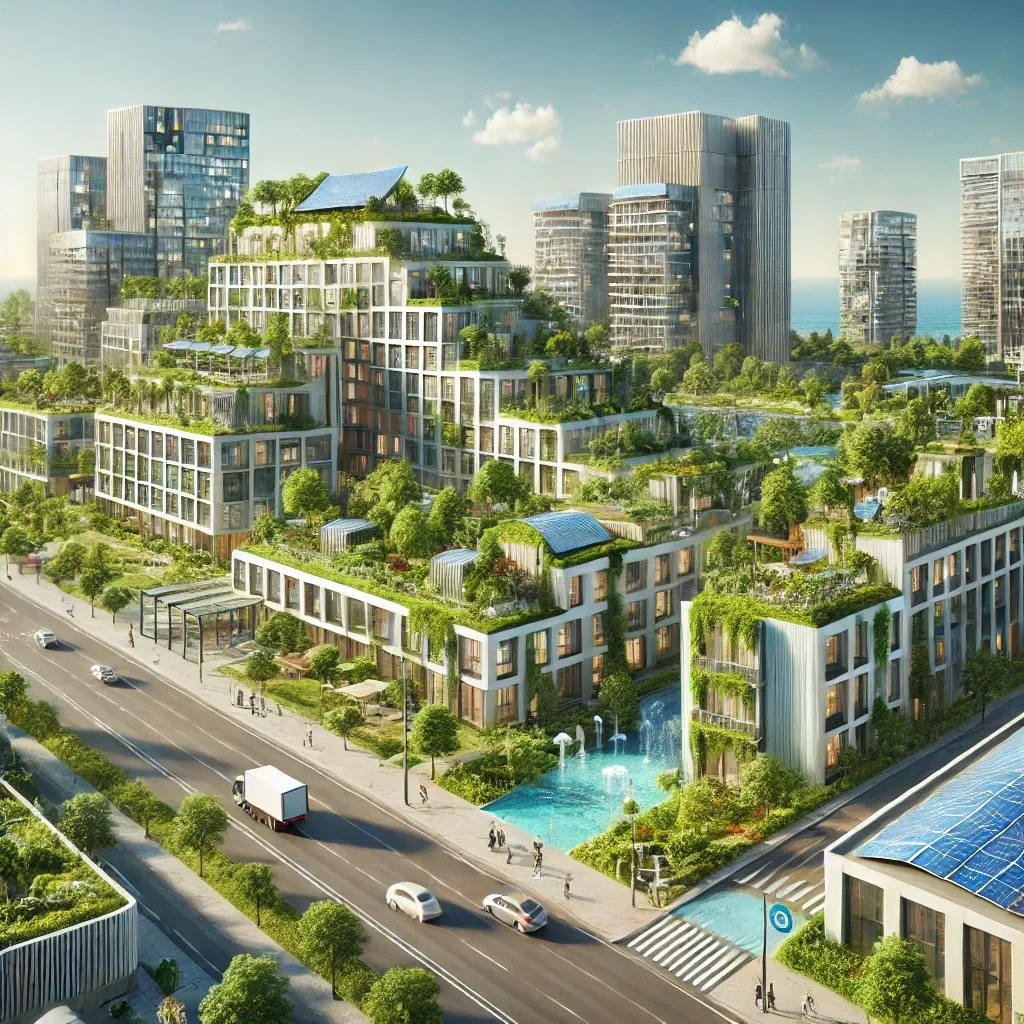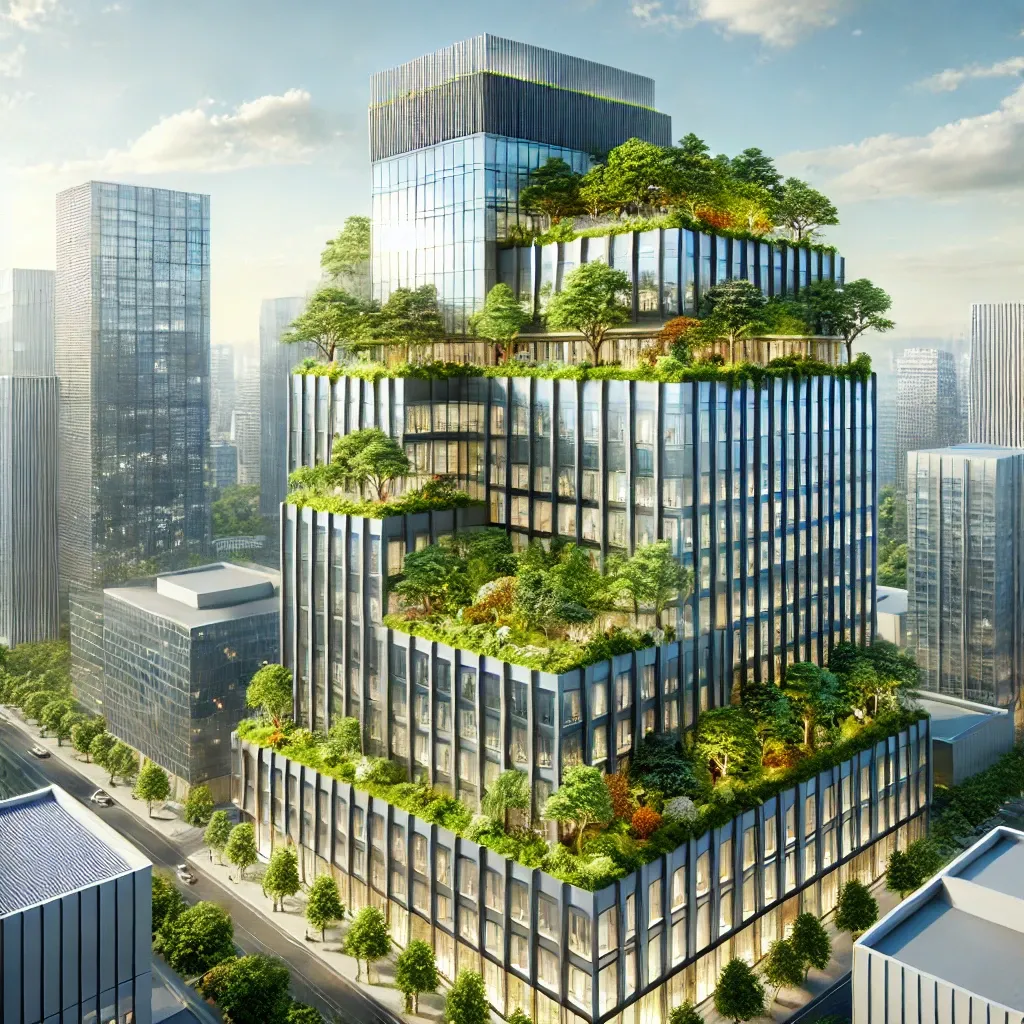How is "green" construction changing the face of modern cities?

- What is green building and what technologies are used in it?
- How do greywater recycling systems and green roofs change the urban landscape?
- How is green building changing our perception of modern architecture?
Eco-friendly construction: trends and technologies
Modern construction focused on ecology and sustainable development has become one of the main trends not only in Europe but also in the USA. Various voluntary certification programs are emerging at the international level, such asLEEDandBREEAMthat evaluate buildings based on criteria of environmental safety and their impact on the surrounding environment. As a result, thousands of properties, including the famous building“Taipei 101”The secluded houses in Pennsylvania have received the honorary status of "green." This proves that ecology in the construction sector is no longer just a hobby for a few enthusiasts, but a full-fledged practice encompassing many aspects of urban and rural life. Let's take a closer look at the key technologies that form the foundation of "green" architecture in our era and for the future.
Alternative energy sources
First of all, it is worth noting the use of alternative energy sources. Just recently, installing solar panels on rooftops was seen as an extravagant hobby, but now this solution is becoming the norm and is actively supported by legislative initiatives in various countries—from Australia to Latin American countries. Solar panels have become an accessible and affordable way to generate energy, opening new horizons for both residential and commercial use.
- For example, inUnited KingdomA tariff system for the sale of surplus electricity has been implemented, which encourages the use of renewable energy sources such as solar and wind installations, as well as small hydropower plants.
- By participating in the program, homeowners can significantly reduce their utility costs and also earn income from the electricity they produce and export to the grid.
Application in industry
At the same time, alternative energy sources are actively used in industrial construction. A striking example is an Indian company.Hero Motocorp, which equipped its research center inIn Jaipursolar panels. The energy obtained from them fully meets the needs of a huge campus area.100 hectareswhere the greenhouses, office buildings, and test tracks are located.
Water recirculation systems
Moreover, the implementation of water recirculation systems is becoming an equally important trend in the construction industry. These technologies help significantly reduce water resource consumption and effectively utilize wastewater. Modern treatment and recycling facilities allow for the reuse of purified water for various household purposes. This approach is particularly relevant for cities where water scarcity is becoming a serious issue.
Waste management
Around the world, waste management methods are also actively developing, which helps reduce the negative impact on nature. Construction sites are increasingly using recycled materials, which is quickly becoming the norm in modern construction. This not only reduces the need for new resources but also decreases the amount of waste sent to landfills, which, in turn, helps improve the state of the environment.
Conclusion
In conclusion, it can be confidently said that the shift towards "green" construction is not just a trendy movement, but a necessity dictated by the realities of modern life and concern for the future of our planet. The implementation of eco-friendly technologies will contribute to the sustainable development of the construction industry and positively impact the quality of life for future generations.
Gray water recycling systems
In recent years, plumbing companies in the United States, the United Kingdom, and Australia have increasingly begun to offer their clients solutions for the disposal and reuse of so-called "gray" water. Unlike "black" water, which comes from wastewater that cannot be reused, "gray" water, which comes from sinks, bathtubs, and washing machines, can be treated and used for various household needs.
For example, it is perfect for:
- watering plants,
- car washing,
- flushing in toilets.
These systems can reduce water consumption by as much as50%which makes them quite appealing to consumers.
Popularization of water purification technologies
Technologies related to water purification and reuse are becoming increasingly common in industrial and commercial construction, as well as in office spaces. Therefore, such systems can be found in:
- hotels,
- in offices,
- in hostels,
- production facilities.
Despite their high efficiency, the use of these technologies in private homes and apartments remains rare. Unfortunately, for private users, the main advantage of such systems is only a slight savings on utility bills.
However, the costs of maintaining them can significantly outweigh these benefits, especially since there is a risk of insufficient water purification. This nuance is one of the reasons why "gray" water recycling systems have not found widespread use; for example, in California, they were only legalized inin 2009.
In order for these systems to function effectively, strict regulation by local utility services is necessary.
Green roofs: a modern trend
It should also be mentioned that "green" roofs, which have become a characteristic element of urban architecture in major cities across Europe and America, are no longer something unusual for residents.
29 January
9 October 2024
9 October 2024
29 September




In 1935, he created the first garden on the observation deck of the Rockefeller Center in New York. The main principle of this technology has remained unchanged for almost a hundred years:
- They are laying a waterproof coating on the roof.
- then they install drainage,
- After that, the drainage system is covered with soil.
This soil can grow everything—from a regular lawn with flowers to full-fledged gardens, like those at the Fairmont Waterfront Hotel in Vancouver, where green spaces with bees have been created.
Advantages of green roofs
In addition to their obvious environmental benefits, "green" roofs offer a multitude of additional advantages. They are:
- contribute to improving air quality in urban areas,
- help reduce the heat island effect,
- can significantly enhance the aesthetic appeal of real estate properties.
Thus, the implementation of these technologies has enormous potential and can significantly impact the creation of more sustainable and comfortable urban spaces.

On one hand, the use of green roofs and special substrates helps buildings achieve natural insulation, allowing them to retain cozy warmth during the cooler months and protecting against bright sunlight in the summer.
At the same time, the ground acts as a moisture-absorbing structure that helps to accumulate precipitation, which in turn reduces the negative impact of moisture on building materials and prevents the formation of leaks.
According to the latest data, implementing a full green roof can significantly extend the lifespan of a roof, typically doubling it. This is why in Mexico City, about 8% of the city budget is allocated each year for the greening of multi-story buildings.
International experience
A specialized research center has been established in the Israeli city of Haifa that is working on this topic, while in the UK, companies such as Rolls Royce, Sainsbury's, Eversheds, and Kanes Foods are actively commissioning projects with green roofs for their offices and production facilities.
In the United States, the area of such ecosystems reached approximately 500,000 square meters in 2014.
Modern construction materials
In addition, the use of modern building materials is also an important aspect that contributes to the development of eco-friendly construction. Increasingly, wooden structures are being used in the construction of multi-story residential and industrial complexes. Examples of such projects include:
- nine-story residential complex Cenni di Cambiamento inMilan;
- the six-story headquarters of the media company Tamedia in Zurich;
- high-rise residential complex Forte in Melbourne.
Hydroceramics as the future of construction
An innovative building material - hydroceramics, made from a unique gel that can absorb excess moisture and release it back into the atmosphere when heated, could become the cladding for homes of the future. This hydroceramic material helps effectively control humidity levels, maintains an optimal temperature inside rooms, and significantly reduces energy consumption.
Problems of promoting green construction
Nevertheless, despite all the advantages of the green building concept, it has not yet found widespread application. For example, in France, some citizens are skeptical about the idea of green roofs, anticipating additional financial costs.
When it comes to water purification systems, the main obstacle to their implementation is local legislation, which does not meet modern requirements. However, more often than not, the primary reason for the issues with implementation is traditional conservatism.
Research in the field of sustainable construction
In 2010, Lance Hosey, head of the sustainable building and design department at the architectural firm Perkins Eastman, suggested to his colleagues to compile a list of the most "green" buildings constructed over the past few decades. This study vividly demonstrated the many different approaches and possibilities in the field of sustainable construction, showing that despite all existing obstacles, familiarizing oneself with new technologies and their application remains a crucial step towards a more sustainable future.
Conclusion
As we conclude our discussion on "green" construction, I cannot help but note how advanced technologies and ecological approaches are influencing the future of architecture and urban planning. We have witnessed how alternative energy sources, such as solar panels and wind power plants, are becoming not just a fashionable trend, but an integral part of our lives and the economic policies of many countries. The strengthening of initiatives such asfeed-in tariffsnot only helps reduce energy supply costs but also creates additional opportunities for financial growth for individual households and businesses.
Moreover, the development of water recirculation systems is an important step towards more efficient resource use. In conditionsglobal water crisisThe implementation of technologies that allow for the treatment of "gray" water and the reduction of overall consumption, which affects many regions, signifies not only progress in the construction industry but also an important contribution to the sustainable development of cities and communities.
We should not forget about "green" roofs, which not only beautify urban landscapes but also serve as ecosystems that contribute to improving air quality and creating a microclimate. They represent a harmonious combination of functionality and aesthetics, and their variety of possibilities allows for the maximum use of available space. The technology of "green" roofs, which is increasingly being implemented in modern construction each year, shows that a conscious approach to the architectural process is enough to transform and enhance our living environment.
Key ideas of "green" building
- Alternative energy sources:solar and wind installations that help reduce energy supply costs.
- Water recirculation systems:technologies that allow for the reduction of overall water resource consumption and the treatment of wastewater.
- “Green” roofs:improving the ecology of cities and creating attractive urban spaces.
Thus, "green" construction is not just an addition to traditional methods, but a whole philosophy that reflects our attitude towards nature and resources. This movement requires us to constantly learn, improve, and, most importantly, have the desire to preserve our planet for future generations. I am confident that the transition to more sustainable practices in construction will be key to creating more resilient and healthy cities, and we all play an important role in this process. There is much work and discovery ahead, and together we can make the world a better place, starting with small but significant steps in the realm of "green" construction.
Comment
Popular Posts
9 October 2024
9935
9 October 2024
1485
29 September
356
Popular Offers

Subscribe to the newsletter from Hatamatata.com!
Subscribe to the newsletter from Hatamatata.com!
I agree to the processing of personal data and confidentiality rules of Hatamatata








